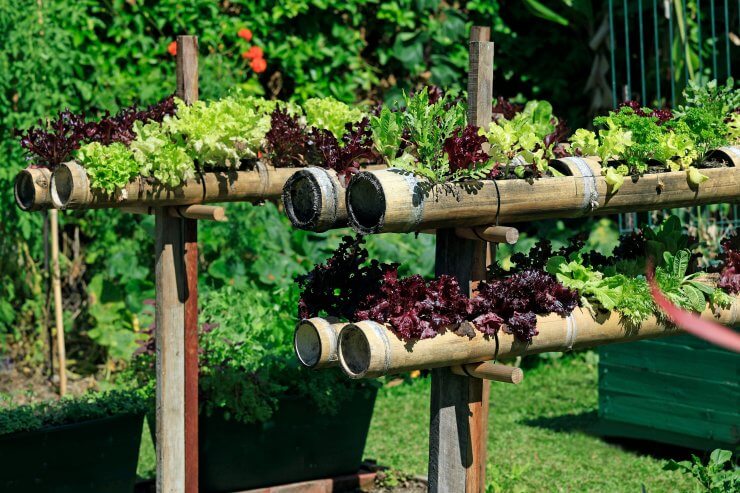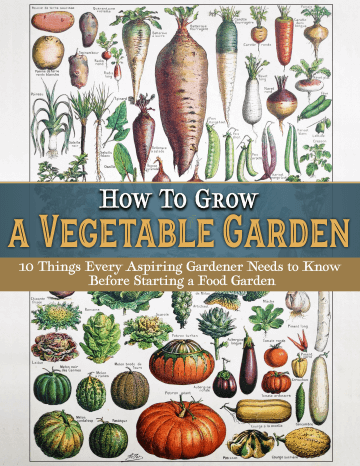
You don’t need a huge yard to enjoy fresh greens daily. When you plan it right, just six square feet can be enough. This space is easy to care for and can fit on a balcony, patio or sunny corner of your backyard. Busy, health-conscious people embrace micro-gardening because it helps them grow their ingredients without a big time or space commitment.
Discover 10 top tips for growing, harvesting, and enjoying fruits, vegetables, herbs and more from your home garden—when you access the FREEBIE How to Grow a Vegetable Garden, right now!
This approach is perfect if you’ve been searching for vegetable garden ideas for small spaces. With the right mix of crops and a smart planting plan, you can regularly enjoy crisp, flavorful salad greens straight from your mini lawn.
Designing an Efficient Six-Square-Foot System
When setting up a six-square-foot salad system, the correct configuration makes all the difference in how much you can grow and how easy it is to maintain. Choose a location that gets adequate sunlight daily — ideally morning or early afternoon light — to support steady, leafy growth. If you’re short on floor space, consider using wall-mounted planters or stackable containers to add more growing surfaces.
Group crops with similar needs and leave room for vertical elements like trellises or hanging planters to expand your growing space upward. Companion planting is especially useful in these tight layouts because it reduces root-depth competition and helps plants thrive without fighting for space or nutrients.
Whether you build your system DIY-style or go with a premade kit depends on your budget and time. DIY options using wood, food-safe buckets or upcycled materials can be cost-effective and tailored to your space. Meanwhile, premade systems save setup time and often include built-in irrigation. Either way, aim for breathable containers with good drainage and stable supports if you’re growing vertically. Thoughtful configuration makes your six square feet feel bigger and keeps your salad harvests coming.
The Best Crops for Continuous Harvest
To enjoy daily harvests, go for fast-growing, cut-and-come-again greens that keep producing with minimal effort. Leaf lettuce, arugula and spinach are fantastic choices because they regrow quickly after each cut, giving you a steady stream of fresh greens. You can also add compact crops like radish, baby kale, and herbs like cilantro or chives to bring more flavor and variety to your salads.
These tips work whether you’re tending to herbs outdoors or growing lettuce indoors on a sunny windowsill. To keep your mini salad garden productive, choose varieties with short maturity dates and high regrowth potential so you can enjoy homegrown ingredients daily.
Scheduling Daily Yield
Succession planting is ideal to keep your vegetable garden productive without gaps. Instead of sowing everything at once, you plant smaller amounts during the growing season. For instance, many gardeners plant batches of beans about 10 to 14 days apart to avoid having to harvest everything at the same time.
Succession planting keeps your meals filled with fresh, homegrown greens all season long. To stay on top of your sowing schedule, try using a simple spreadsheet or a notebook to track what you’ve planted and when it’s time for the next batch. These tools make it easy to plan, stay organized and get the most out of your tiny growing space.
Soil, Fertility and Watering for Small Systems
When gardening in a tiny space, using high-quality, nutrient-dense soil blends is one of the smartest moves you can make. Go for mixes designed for containers or raised beds because they’re packed with organic matter and hold moisture well, giving your plants the best start. To keep everything thriving, try easy organic fertilizers like worm castings or compost tea — both are simple to apply and give your greens the necessary nutrients.
Add a layer of organic mulch — such as straw, shredded leaves or compost — to your salad garden. This approach reduces soil moisture loss from evaporation by 10% to 25%, which is a big win when every inch of your space counts. Make watering easier and more consistent with self-watering containers or drip systems so you don’t have to stress about dry soil. These ideas for gardening in small spaces will help you grow healthy, productive plants without much fuss.
Common Challenges in Small-Space Vegetable Gardens
Working in a tiny space makes it easy to run into issues like overcrowding, nutrient depletion and fungal diseases. However, a few simple tweaks can keep your yard healthy. Overcrowding is a common problem — it creates moisture and humidity, causing diseases to spread fast. It’s important to thin your seedlings and give each plant room to breathe.
Rotating your crops helps balance the soil and reduces the risk of depleting key nutrients your greens need to thrive. If pests appear, reach for organic options like neem oil or insecticidal soap to tackle the problem without harming your plants. You can also boost airflow and light access by spacing your containers or beds a little farther apart and pruning back any overgrowth. These changes will help you keep your garden productive and your plants happy all season.
Small Systems Deliver Big Rewards
Six square feet may seem small, but smart planning can provide satisfying daily harvests of fresh, homegrown greens. The best vegetable garden ideas for small spaces come from trying new techniques and adjusting them to fit your needs. Start simple, experiment along the way and enjoy the rewards of your mini salad garden.
Discover 10 top tips for growing, harvesting, and enjoying fruits, vegetables, herbs and more from your home garden—when you access the FREEBIE How to Grow a Vegetable Garden, right now!




